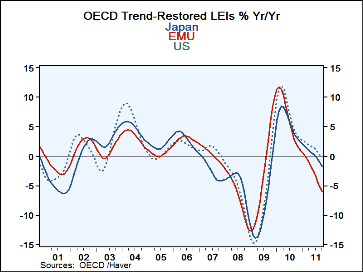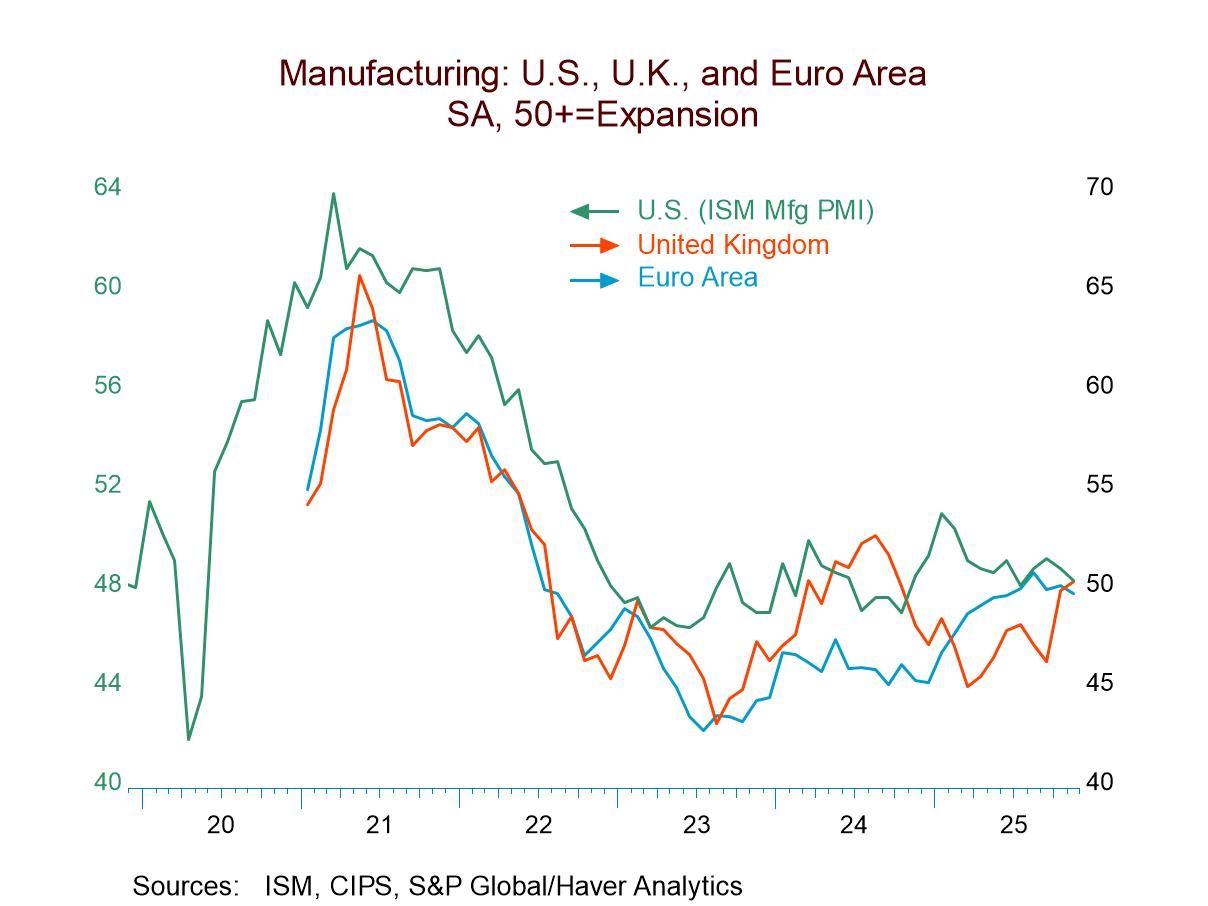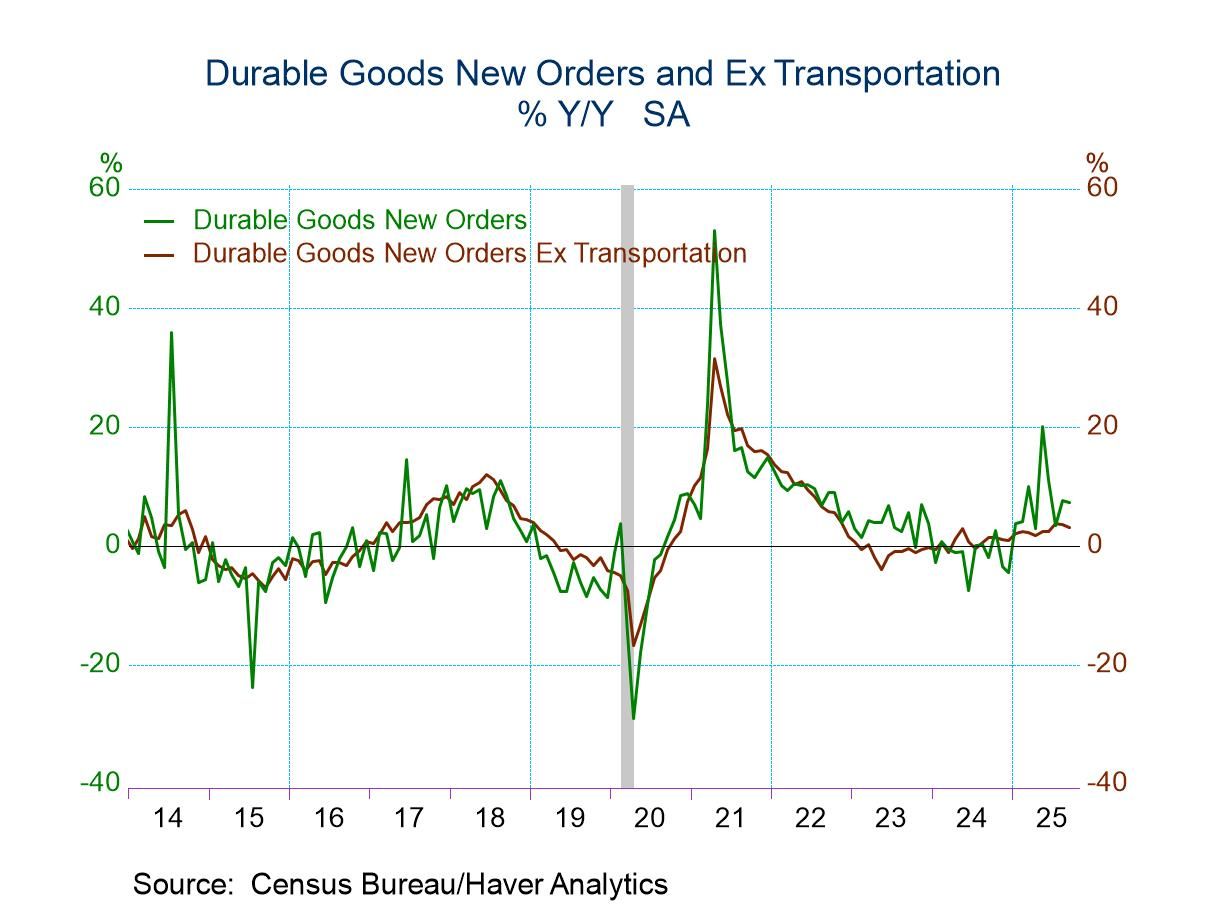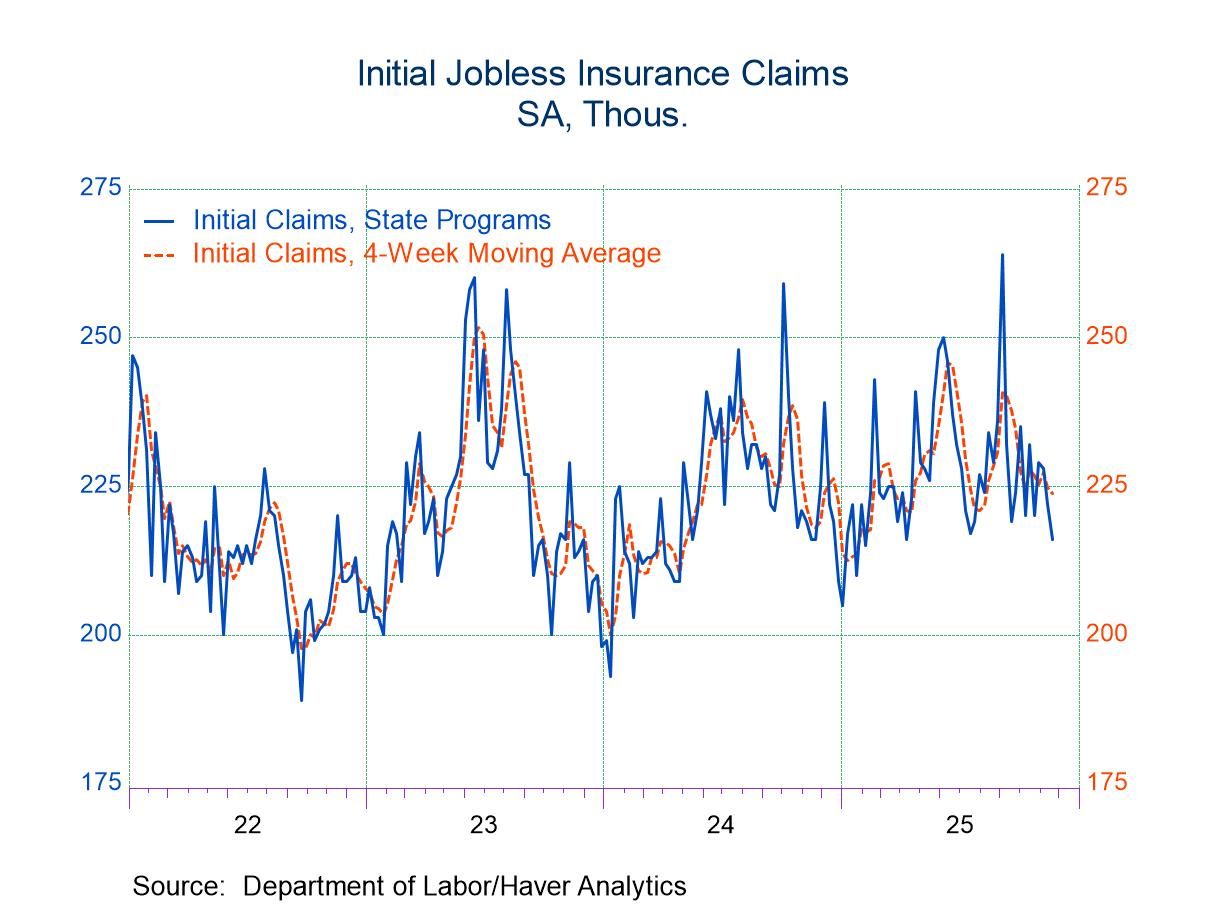 Global| Dec 12 2011
Global| Dec 12 2011OECD LEI's Point to Trouble Ahead
Summary
The decay in the OECD LEIs is much more severe for EMU that for the US or for Japan. While the US and Japan indicators point to moderation (but still to trend or above trend growth) the EMU indicators point to a more severe slowing. [...]
 The decay in the OECD LEIs is much more severe for EMU that for the US or for Japan. While the US and
Japan indicators point to moderation (but still to trend or above trend growth) the EMU indicators point
to a more severe slowing.
The decay in the OECD LEIs is much more severe for EMU that for the US or for Japan. While the US and
Japan indicators point to moderation (but still to trend or above trend growth) the EMU indicators point
to a more severe slowing.
The EMU composite indicator is at a ratio to trend of 98.5 to trend, that means it is below trend by 1.5 percentage points. The US is at 100.9, still above trend. Japan stands at a ratio to trend of 101.3. Of course Japan’s trend has been muted after its decade-long battle with deflation. It continues to lose growth to trend even as it tries to recover from its tsunami, earthquake and nuclear disasters of earlier this year. Japan is holding onto growth, but is not gaining momentum in that fight.
Looking at some country detail in EMU we see that both France and Germany are nearly two percentage points below their respective trends. Italy stands 3.5 percentage points below trend. The UK is relatively better off at only 1.4 percentage points below trend.
Among the BRIC countries Russia and China still have ratios of current composite indicators to trend that are above 100 that point to continued above-trend growth (actually trend growth only for China). But Brazil is nearly six percentage points below trend and India which posted a decline in its IP in today’s data shows a current composite that is nearly seven percentage points below trend. Brazil and India give a new meaning to the acronym ‘Bric’ (Brick!).
While the percentage point declines in the trend-restored indicators have not worsened by much from six months to three months, the composite indicator to trend ratios have worsened noticeably. Six months ago the EMU ratio was positive at 101.3 but it is now at 99.3 and has been below 100 for three-months running. The US indicator has slipped from its level of six months ago, too, but is still steady over the last three months and above 100 (trend). Germany’s reading has slipped below 100 for two months running, for France, the index is deficient for three-months running; Italy’s ratio is light for four months running.
Spain continues to fight off the contraction signal clawing to a level just above 100 over the past four months despite a crushing burden of unemployment and an austerity program. Conversely, Greece’s sub-par growth signal has been in play continuously since March of 2010 although it has not been worsening.
The OECD signals show losses in momentum and a clear break with growth uptrends for a number of members. The Zone is now clearly indicating that sub-par (sub-trend) growth lies ahead and is threatening to have a real downturn emerge, not just a slowing, but that event is not yet baked in the euro-cake. Still, the EU summit may have whipped up some sour frosting; it does not seem to have done much to bolster sentiment for the region and that may be the final shove into the oven to complete the baking of that undesired euro-cake. Recession ahead? Could be.
| OECD Trend-Restored Leading Indicators | ||||||
|---|---|---|---|---|---|---|
| Growth:M/M | Growth Progression-SAAR | |||||
| Oct-11 | Sep-11 | 3Mo | 6Mo | 12Mo | Yr-Ago | |
| OECD | -0.3% | -0.4% | -4.8% | -5.2% | -2.2% | 2.9% |
| OECD7 | -0.4% | -0.5% | -6.1% | -6.3% | -2.5% | 2.7% |
| OECD.Euro-Area | -0.8% | -0.9% | -10.0% | -10.0% | -6.1% | 2.0% |
| OECD.Japan | -0.4% | -0.5% | -5.3% | -5.3% | -1.8% | 3.2% |
| OECD US | -0.1% | -0.3% | -3.7% | -4.1% | -0.3% | 3.7% |
| Ratios to Trend | ||||||
| Monthly | 6Mo Ago | 12Mo Ago | ||||
| Ratios to Trend | Oct-11 | Sep-11 | Aug-11 | Jul-11 | Apr-11 | Oct-10 |
| US | 100.4 | 100.4 | 100.5 | 100.7 | 101.2 | 100.3 |
| UK | 99.3 | 99.6 | 100.0 | 100.3 | 101.2 | 101.4 |
| Japan | 100.4 | 100.5 | 100.6 | 100.6 | 100.9 | 100.4 |
| EMU | 99.3 | 99.6 | 99.9 | 100.3 | 101.3 | 101.5 |
| Germany | 99.4 | 99.8 | 100.2 | 100.7 | 101.8 | 101.9 |
| France | 99.1 | 99.4 | 99.8 | 100.2 | 101.4 | 101.6 |
| Italy | 98.8 | 99.0 | 99.3 | 99.6 | 100.7 | 101.4 |
| Greece | 98.6 | 98.5 | 98.4 | 98.3 | 98.3 | 98.8 |
| Spain | 100.1 | 100.2 | 100.3 | 100.4 | 100.8 | 101.1 |
| Slowdowns indicated by BOLD RED | ||||||
Robert Brusca
AuthorMore in Author Profile »Robert A. Brusca is Chief Economist of Fact and Opinion Economics, a consulting firm he founded in Manhattan. He has been an economist on Wall Street for over 25 years. He has visited central banking and large institutional clients in over 30 countries in his career as an economist. Mr. Brusca was a Divisional Research Chief at the Federal Reserve Bank of NY (Chief of the International Financial markets Division), a Fed Watcher at Irving Trust and Chief Economist at Nikko Securities International. He is widely quoted and appears in various media. Mr. Brusca holds an MA and Ph.D. in economics from Michigan State University and a BA in Economics from the University of Michigan. His research pursues his strong interests in non aligned policy economics as well as international economics. FAO Economics’ research targets investors to assist them in making better investment decisions in stocks, bonds and in a variety of international assets. The company does not manage money and has no conflicts in giving economic advice.






